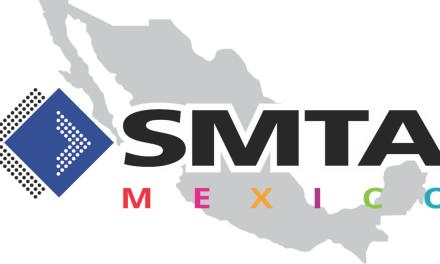Celestica Transforms the Supply Chain to Accelerate Aerospace Industry Innovation

By Jack Jacobs, Celestica Blogger
Innovation is always on full display at the Farnborough Air Show and this year was no exception. The commercial aviation industry is seeing stronger passenger demand, lower commodity prices and growth in emerging markets. These encouraging trends are stirring enthusiasm for more disruptive innovations to come and ramping up demand for new aircraft production: over the next 20 years, more than 41,000 new commercial aircraft will take flight, according to Boeing’s Current Market Forecast 2017-2036.
This increase in demand should compel OEMs to reassess their supply chains, asking some pointed questions: Are we responsive enough? Are we embracing smart automation, machine learning, additive manufacturing to ensure we’re meeting customer demands? Do we have the human capital and skill sets required to support these technologies?
This level of reassessment is daunting for OEMs, whose ecosystems of suppliers and sub-contractors can number in the thousands, according to many estimates. But OEMs must embrace this new normal, what we call the Acceleration Economy: where disruptive change is met with innovation; where new ideas strengthen competitive advantage; where companies collaborate across deep networks and bring new products to market faster; and where technological adoption secures a lasting market presence.
OEMs must accelerate past the legacy challenges of long lead times to keep pace with their airline customers’ emerging needs. And all routes come back to the supply chain: transforming it will require focus in at least three areas:
- Rationalize the Quantity of Suppliers: The old adage “less is more” certainly applies here. One of the attributes of this new Acceleration Economy is making flexibility an imperative. The supply chain needs to be sufficiently agile to capture fleeting upside opportunities and that cannot happen with consistently slow and underperforming suppliers. OEMs must conduct assessments of all suppliers to answer three questions: 1) Is the supplier positioned to meet performance specifications? 2) Are they applying automation to their own processes that will carry over to the OEM and generate significant time savings? and 3) Are subcontractors well-positioned to deliver parts as complete sub-assemblies?
- Embrace the Internet of Things (IoT): The Internet of Things will make aircraft a node on the network, part of an interconnected environment that drives efficiencies, reduces costs and improves the passenger experience. The overall efficiency of the supply chain must accelerate the creation of the sensors, components and other electronics to make IoT a true differentiator for aircraft and deliver on those outcomes. And suppliers need to incorporate more sensors into their own processes allowing for larger swathes of data collection and advanced analytics both the OEM and supplier can view and use to unlock more efficiency across supply chain.
- Shorten Product Development Cycles: As digital transformation changes the way aircraft are operated and managed, OEMs are relying ever more heavily on supply chain partnerships to provide technological expertise and implement solutions to foster innovation. However, developing deeper relationships with fewer partners who can deliver on multiple aspects across the supply chain and support the full product lifecycle will significantly improve an OEM’s ability to shorten overall product development cycles.
It is certainly an exciting time for the aerospace industry and OEMs have an opportunity to play an even more critical role in bringing more innovative and efficient aircraft and products to the market. But to stay invaluable to their airline customers, OEMs must aggressively position themselves to anticipate the next set of customer expectations and improve their speed to market. That will only come from transforming the supply chain. According to a recent report we conducted in collaboration with IDC, “Modernizing a supply chain entails the extension of processes upstream to product innovation and design and development, and downstream to manufacturing processes and execution.”
This type of transformation cannot happen overnight. But taking these initial steps will prove invaluable in the Acceleration Economy. The OEMs who maximize the value of their assets to identify new collaboration equations, inject innovation and drive profitable growth will prove to be the most successful.
[1] “Boeing Current Market Outlook 2017-1036”, www.boeing.com/cmo












